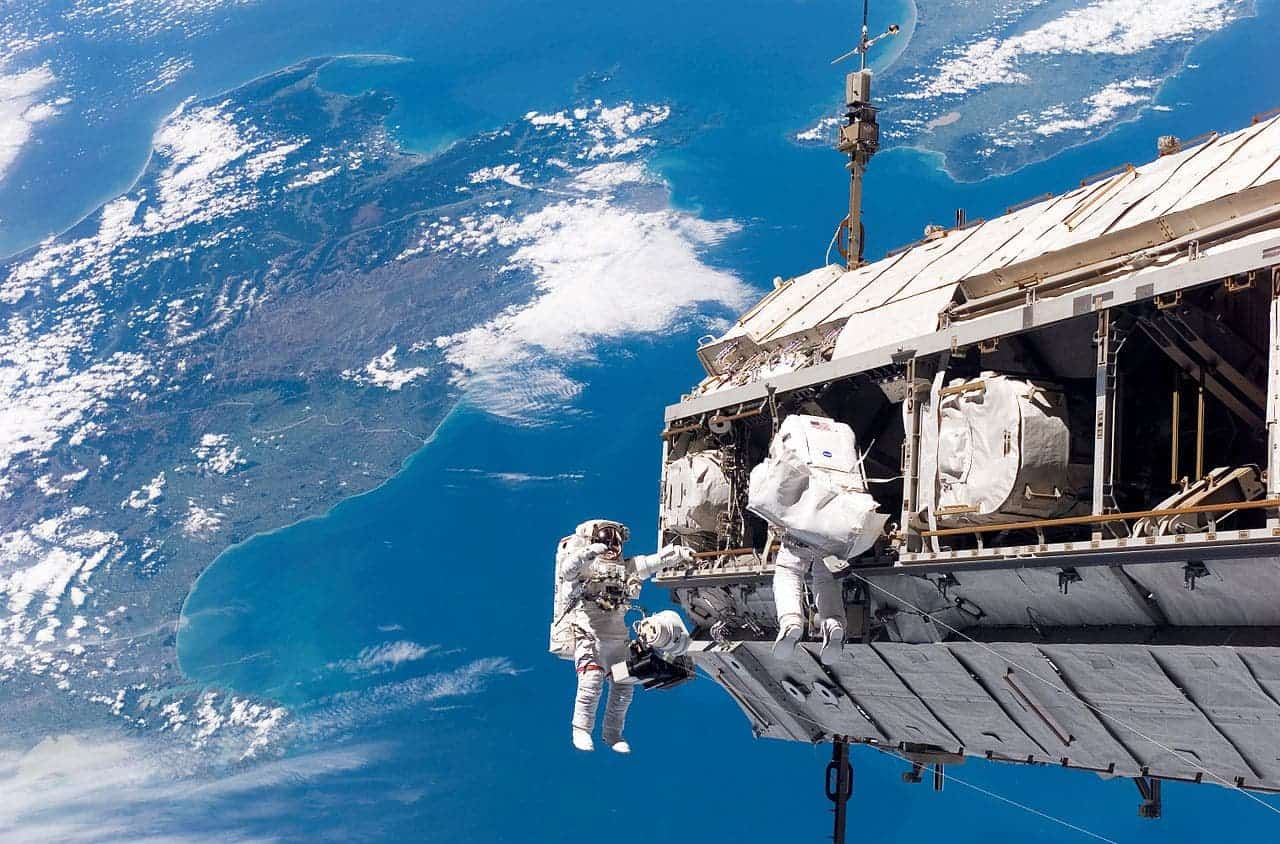A new paper from the University of Edinburgh shows that by banding together into biofilms, microbial communities can live far longer than isolated individuals when exposed to Mars-like brines. The bugs survived even better when dried out first, such as would happen on the surface of a spaceship in transit.

Image credits NASA / Wikimedia.
The findings offer hope for discovering alien life, as well as showing the dangers of contaminating alien planets with Earth microorganisms.
Traveling buddies
Mostly bone-dry and with little atmosphere to protect its surface from radiation or keep temperature in check, Mars is a world decidedly hostile to life. Still, it does have some very attractive qualities. The red planet is really close (by astronomical standards) to Earth and harbors ice caps — even seasonal streams of liquid water. So a lot of people have their sights set on Mars for potential colonization. Even more, in the end Mars may surprise us with its own indigenous life — which would be great.
One problem arises however. Every time we send a craft to the planet, we run the risk of infecting/seeding it with microorganisms from Earth. If these get a foothold on Mars, they could endlessly frustrate scientists trying to determine the planet of origin — or they could overtake the native inhabitants altogether. But are microbes even capable of surviving the trip through space, and then on Mars?
A new research paper by Dr Adam Stevens at the University of Edinburgh and colleagues shows that biofilms (colonies protected by a slime-like casing) can survive for long periods of time in Mars-like brines — even longer if they’ve been dried out by space-flight first.
The team submerged biofilm samples in seven brines of various chemical compositions and concentrations. In the most diluted brines, all of the biofilms survived well past the 5-hour observation time. In more concentrated brines (the last being 70 times as salty as the weakest one), desiccated biofilms survived for much longer than those whose water content wasn’t altered.
Alien invasion with a twist
After an initial shock, these dried out biofilms actually started to grow — presumably in an effort to protect themselves from the environment, the team writes. This may be caused by cells communicating through the biofilm, with cells exposed on the outside layer sending warning signals to those further down in the colony. These insulated cells could then either produce more insulating slime, or reproduce more quickly and build the barrier through sheer numbers.
Still, 5 hours into the experiment, all the microbes in the dried biofilms were dead. The hydrated biofilm cells didn’t even make it to the one hour mark, with some samples dying out in under half an hour.
This research helps us better understand how to look for, and protect, possible alien life. Areas on Mars that have water are the most likely spots for finding alien life, so they’re designated as ‘special regions’ by the international Committee on Space Research. At the same time, these characteristics also make them the most readily-contaminated spots on the planet. Stevens’ research shows that biofilms could allow microorganisms to survive in these conditions. This means that in case of contamination, it would be impossible to study special regions with any semblance of accuracy — so we should be very careful when sending any drones or rovers to these areas.
The same paper also shows there’s hope in finding life nestled in Mars’ briny slopes, as well as on the moons further out in the solar system.
“This research gives us some information about what we could possibly look for if we do go and investigate these brines – which, on the flip side, we’re saying maybe we shouldn’t,” says Stevens.
“To me, this is a kind of a call to pick up the baton of this area that we really need to understand as we launch into an era of space travel,” says Jennifer Macalady at Penn State University in University Park.
The full paper “Biofilms Confer Resistance to Simulated Extra-terrestrial Geochemical Extremes” has been published in the journal bioRxiv.


